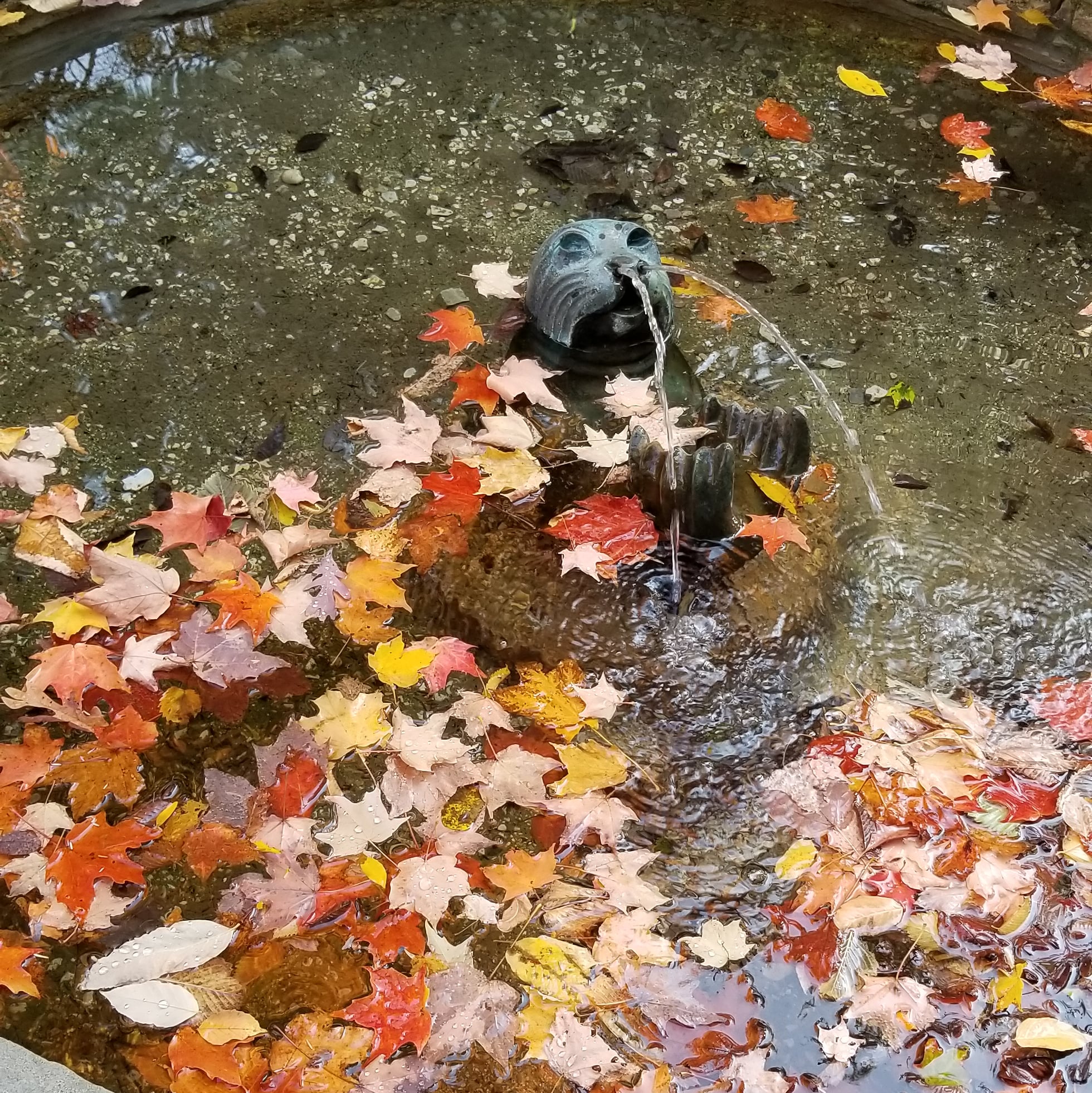
Staying Green When the Leaves Turn Brown (11/21)
By Francesca Kelly for Go Green Highland Park
Autumn days on the North Shore are particularly beautiful. The scarlet and yellow trees stand in brilliant contrast to the sparkling blue of the lake, and it’s a lovely time to be outdoors, taking it all in.
Those gorgeous leaves fall all too soon, however, and we suddenly find them littering our lawns and drives.
Although it might seem hard to believe, what with the annoying roar of leaf blowers throughout our neighborhoods, some of us still like to rake leaves. Jumping in that big leaf pile is fun for kids and dogs and even grownups. But how much raking do we really need to do?
The answer is, not as much as we think, according to the University of Illinois’s Horticulture Extension folks, who encourage homeowners to leave some or even all fallen leaves on the ground, asserting that “these areas of leaves provide valuable habitat for many insects, arachnids (spiders), small mammals, amphibians and birds.”
If you’re not quite ready to let fallen leaves stay where they are, or are worried they may smother lawn turf, you can rake them into garden beds, where they will shelter plants over the winter, providing nutrients to the soil and shelter for smaller wildlife species. Dead leaves constitute the most natural mulch you can find. There are also mulching lawnmowers that break the leaves up into smaller pieces.
Or, stir them into your compost pile. Compost piles need a mix of “wet” (vegetable peels, kitchen scraps, etc.) and “dry” (crunchy dead leaves, shredded paper, dried grasses) to properly transform into useable garden compost, so dry leaves are an invaluable ingredient.
If you must remove the leaves, some ways are more environmentally friendly than others. Raking does not pollute the environment. If you hire a landscaping service, please ask them to either rake or use an electric, not a gas-powered leaf blower. (And in fact, gas-powered leaf blowers may not be used in Highland Park before October 1 or after May 15.) Go Green Highland Park is compiling a list of landscapers and gardeners who use environmentally sound practices; if you have a company to recommend, please contact us!
Leaves can also be bagged and put on the curb for pickup. As most readers already know, Lake Shore Recycling picks up yard clippings and brush weekly, either through their subscription program or on an “a la carte” basis, for which you need a sticker (available at local supermarkets and stores). Leaf, brush, and garden waste pickup will continue until December 15. For very large quantities of leaves or brush (or for any type of materials that you’re looking to have collected curbside), LRS “does appreciate it when people call or email us in advance for, say, over a dozen leaf bags, or a load that might take up half a truck or more,” says LRS Municipal Coordinator Matthew Robins. You can always reach LRS at from 7AM to 5:30 PM weekdays at 773-685-8811 or at service@lrsrecycles.com. And remember: no plastic bags in recycling! For leaves, please use large brown paper leaf bags.
What about those brown stalks that used to be flowers in your garden, now looking a bit tatty? It’s very tempting to “dead-head” flowers in the fall to make the garden look more manicured. But flower heads are an important source of food for birds and insects. Once I noticed native goldfinches arriving regularly to pick away at my dead coneflowers, I stopped cutting them after they’d bloomed, and saw those wild brown stalks as something beautiful.
Speaking of food for wildlife, consider putting your post-Halloween Jack-o-Lanterns out in the backyard for animals to feast upon; or at least put them in your compost pile. But don’t compost or offer pumpkins to wildlife if they have glitter, paint, magic marker or other toxic substances applied to them. And be sure to scoop out any spilled candle wax from the inside.
Bird feeders should be cleaned out, washed and rinsed thoroughly to get rid of potential pathogens. In fact, Audubon urges backyard naturalists to clean feeders every 2-3 weeks. Food will become harder to find as the months grow colder, so stock up on bird seed and be ready to help songbirds, whose populations have diminished by an alarming percentage in recent years. You can still put out hummingbird feeders through much of the fall – hummingbirds generally don’t migrate until late October or even November. Remember: hummingbird nectar should not contain red food coloring!
Just because we care about protecting wildlife doesn’t mean we want wildlife living indoors with us! Early fall is a good time to search out and seal places where mice, squirrels and other wildlife can get into the house, before they start seeking winter shelter. Wildlife removal companies as well as exterminators can help you find those holes and gaps. Preventative measures will translate into not having to use harsh poisons (terrible for raptor populations) or cruel traps. (By the way, “humane removal” clauses for wildlife companies do not necessarily mean that the animal(s) are released into the wild. It only means they are treated humanely during the removal process and may be killed later. The Humane Society offers guidelines on choosing a wildlife removal company by asking the right questions.) Taking preventative measures now means not having to make difficult – and expensive – choices later.
By gently allowing Nature to guide us in our lawn and garden care, and by being more aware of the wildlife living among us, we can truly be stewards of our planet, enjoying a beautiful autumn in our own backyards.
